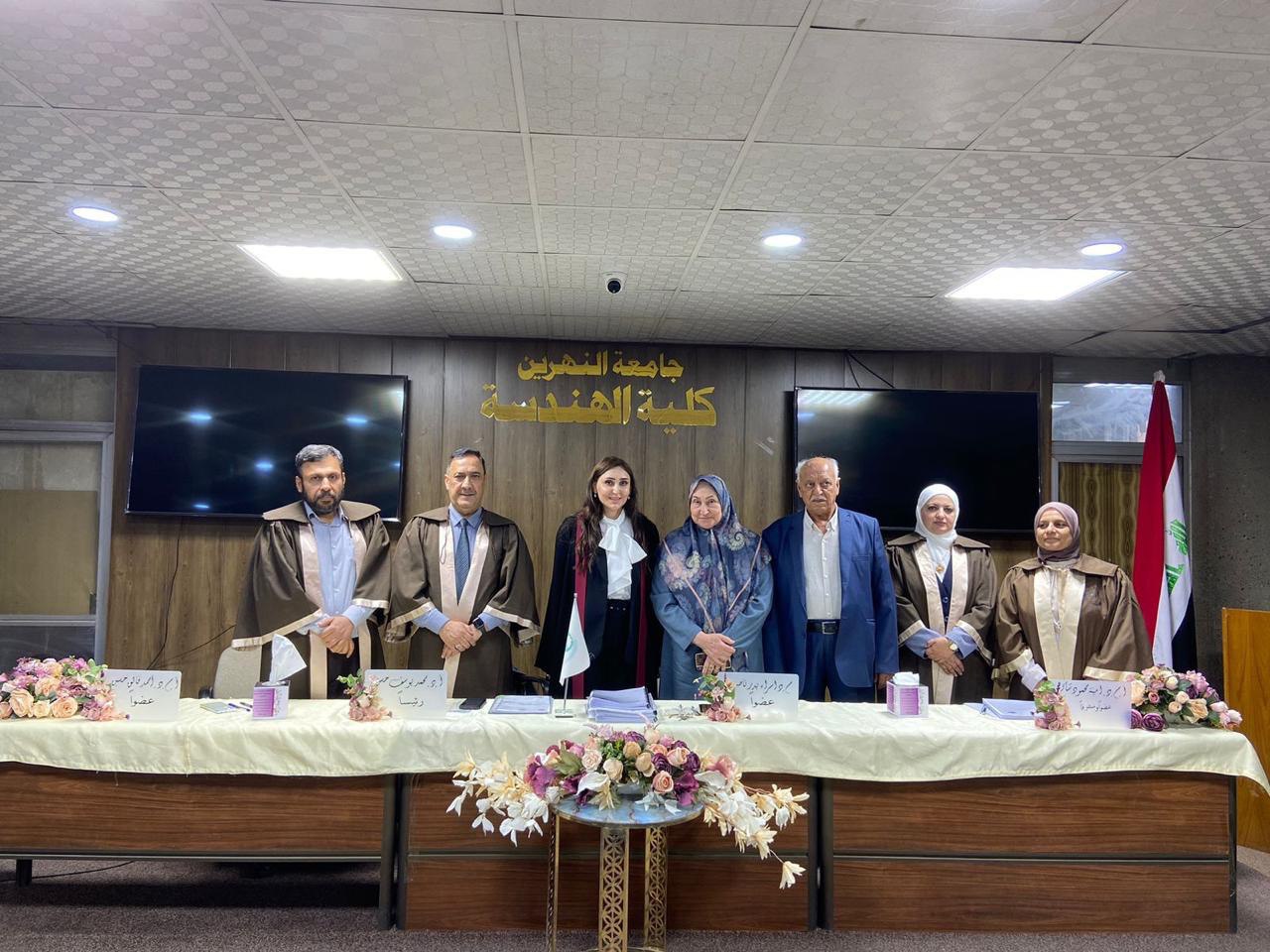Visitors: 33624177 Views
Done By: Electronic and Communications Engineering Department
Post Date: 2024-03-18
Last Browse: 2025-12-19

It was conducted at
nine o’clock in the morning on Monday, 3/18/2024, in the Degla Hall in the
College of Engineering / Al-Nahrain University, to discuss the thesis of the
master’s student (Hala Sabah Mutashar) in the Department of Electronic and
Communications Engineering, which was entitled:
Detecting photovoltaic cell faults using machine
learning
This study focuses on
enhancing fault detection and classification in stand-alone and grid-connected
PV systems by adopting fast and accurate machine learning methods. The research
uses MATLAB to simulate 0.25 MW photovoltaic systems in standalone and
grid-connected cases. This simulation produces various electrical features,
including minimum, maximum, average and range values of currents, voltages and
powers. In addition, environmental features and properties such as temperature
and radiation are extracted. Specific feature extraction is applied to many state-of-the-art
classifiers with appropriate proportions of cross-validation (CV) for error
detection and type classification. The four classification categories are
represented by normal operation (fault-free condition) and electrical faults:
string-to-string fault (F1), string-to-string fault (F2), and string-to-ground
fault (F3). The study uses simple data preprocessing to identify features with
missing values in the data set, performs an appropriate imputation to find the
missing values based on the KNN algorithm, and then applies minimum and maximum
data normalization.
The discussion
committee consisted of the following individuals, their names and their
affiliations: